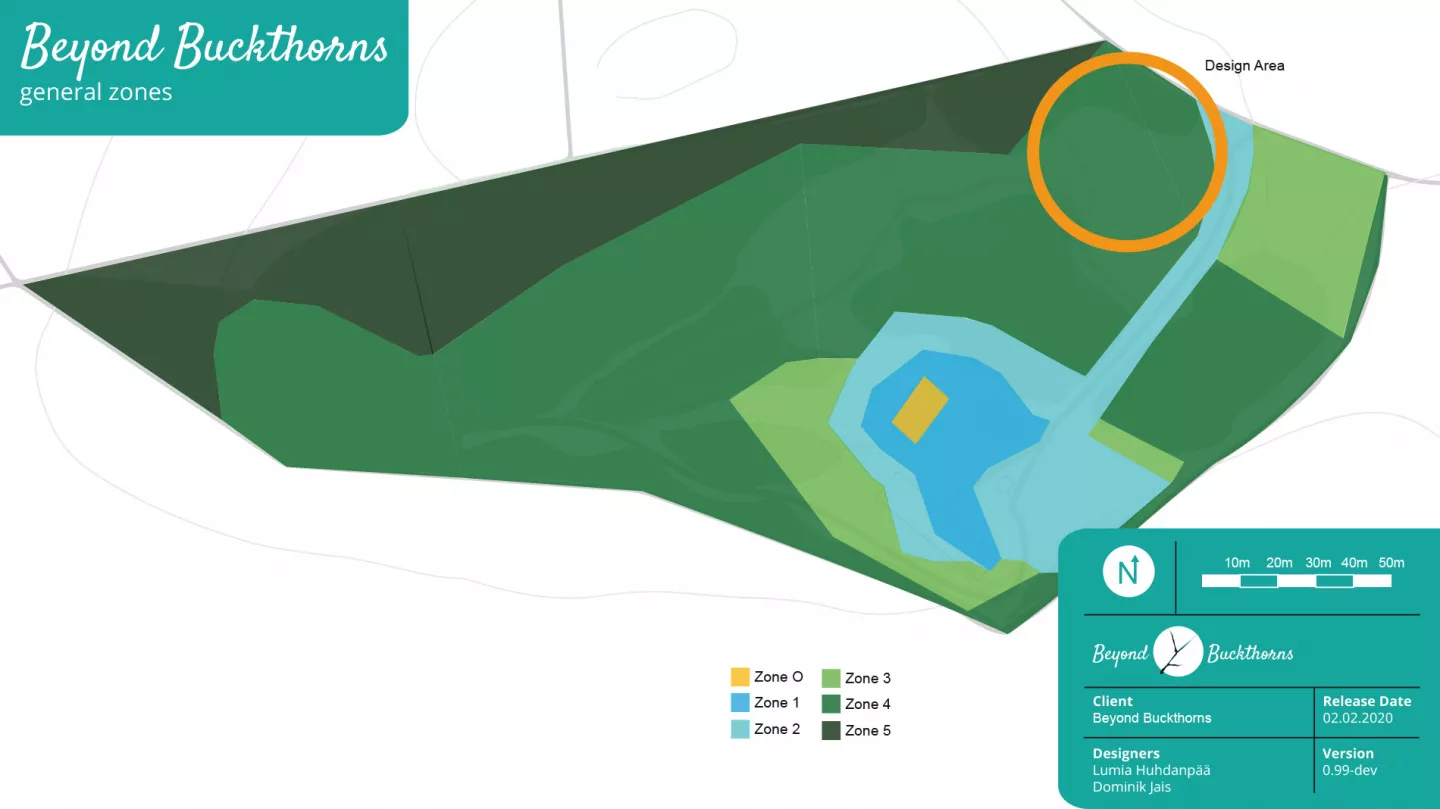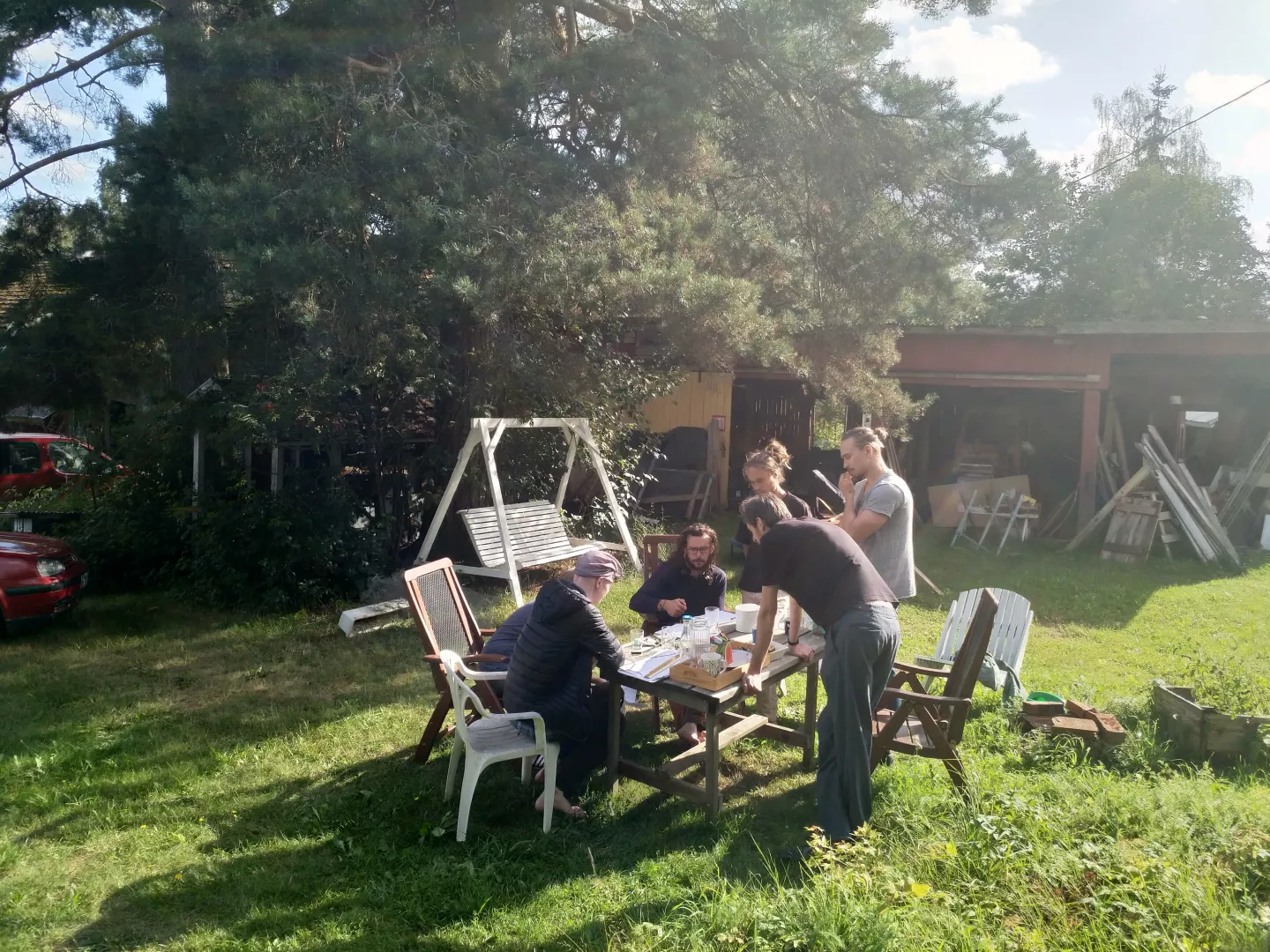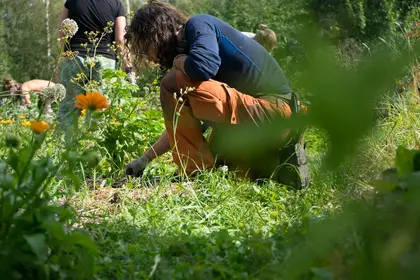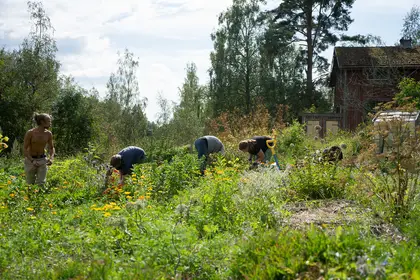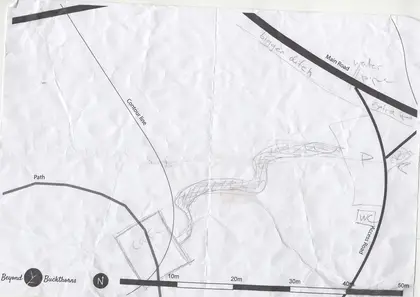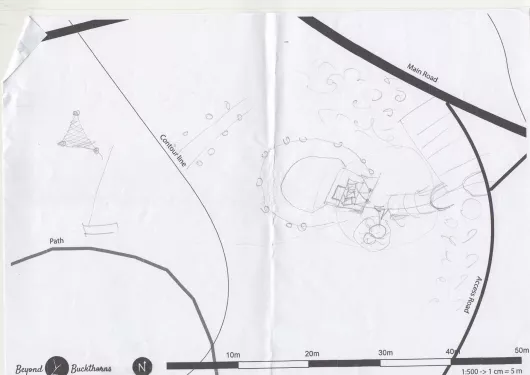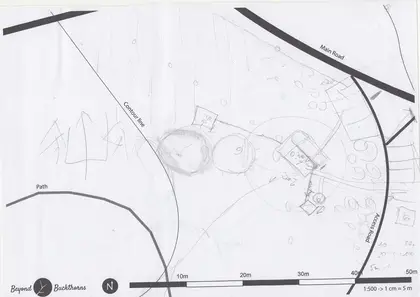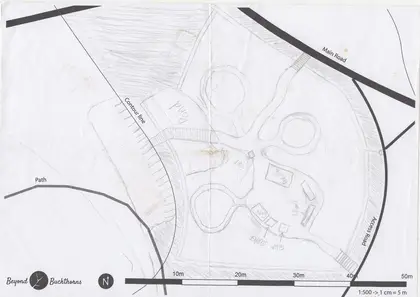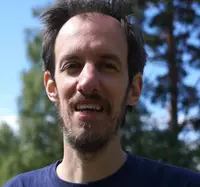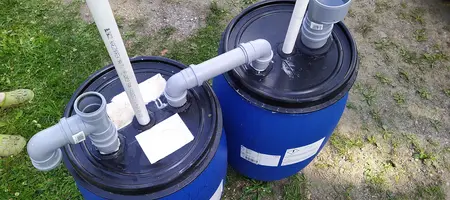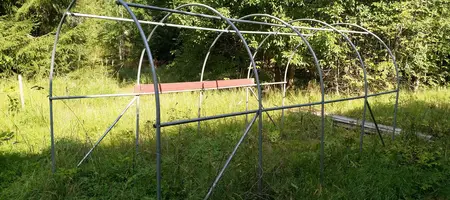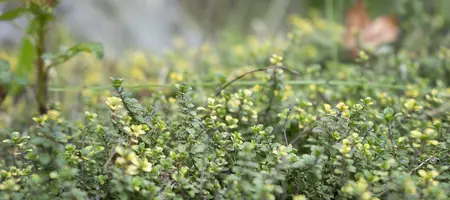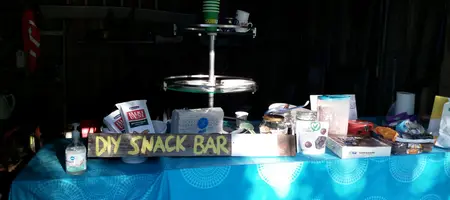In 2020 I designed a new type of permaculture course, the design crash course called designCamp. By stepping through a design process in one or two days the participants learn about the process and get inspiration. The focus is mainly on the process and the tools, but since we design a piece of land all kinds of other aspects, like keyline design, swales, soil, horticulture, etc. get touched – depending on the context of the design. After all, permaculture design is context sensitive.
Since the course is for free it is combined with a permablitz. The participants help with certain tasks, like lifting around heavy objects or weeding the garden. Fair share at play.
Preparations
Choosing the site
Preparation for the course started early. We picked one of the areas at Beyond Buckthorns that haven’t been designed yet (yes, there are still areas). Our choice fell on a subdivision of zone 4. The one that is closest to the main road. See the picture below.
Client interview
Lumia and I stepped through a standardized client interview. My brother suggested telling the participants that there is no limit money-wise, allowing the participants to boldly design what no one has designed before.
Soil samples
Some days before the camp I went for a soil sample. I took a portion of soil with a spate and put the sample into a jar. Then mixed it with water and shook the mixture.
Process and tools
I picked SADIM as the design process to teach and use. For the toolchain I went with Context information, Base map, Client interview, DAFOR, PASTE, Soil samples for the survey stage. For the analysis stage I chose Function System Elements, Soil analysis, Zones, Sectors and an analysis of the contour and watershed based on the Beyond Buckthorns base map.
On the day
We started at 11 o’clock on a rainy Saturday with coffee and cake, jumping straight towards an overview of the design process and clarifying different terms. After some time the rain stopped and since the map is not the territory we went into the field for DAFOR.
After we had all our surveys done we went for lunch break. Lumia had prepared a delicious garden soup for us which we enjoyed while having a chat.
During analysis we checked what we have found, for example if there were any indicator plants or what elements are needed for a certain function. We also ran a soil analysis based on the soil sample and the USDA soil triangle.
It then was time for the Permablitz. Our participants helped us to carry around some IBCs, bring soil for the new greenhouse and weed the garden. We were very very thankful for it!
In the design stage we used the scale of permanence as a process. We jumped into the water and discussed aspects of key points, key lines and contours. Then went for access, trees, structure, etc. The participants got a picture of how the design unfolds itself by having done all the survey and analysis.
We formed teams, went back into the field and put our designs together.
After some time we came back and presented our designs.
We asked our participants for feedback and we got a lot. Lumia and I will now incorporate it into the next designCamp.
At the end Lumia put the sauna and the grill on. Time for party!
Reflection
The scale of permanence is a very good process, which when followed will help to design sites. But for that it has to be understood as a stone carved process which can’t be moved around. I like Yeoman’s idea. Very helpful.
I totally forgot to introduce myself this time. I also had some real difficulties coming from the side effects of the corona vaccination. Next time I won’t forget about the schedule.
All in all it was a good course. Lot’s of discussions, ideas and great designs! Thank you Lumia for hosting!




